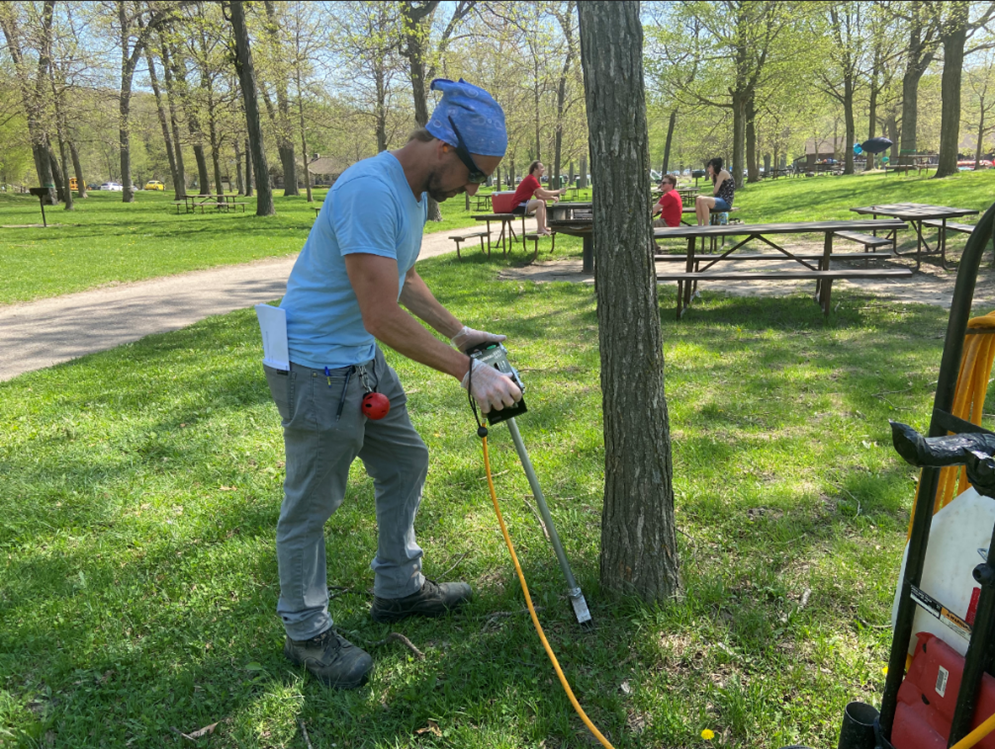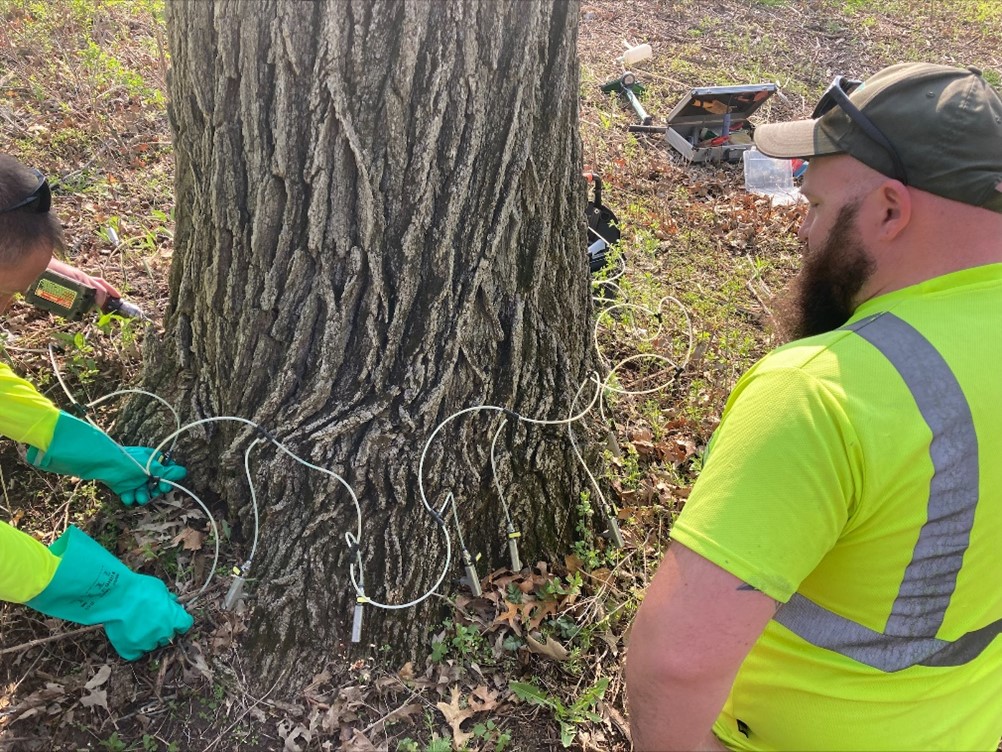Insecticide Options for Homeowners
Spongy Moth
Several options are available to property owners when applying insecticide to a small number of trees to control spongy moth caterpillars. The general recommendation is to treat trees while the caterpillars are small and have yet to cause much feeding damage.
Retreatment may be necessary, depending on the product selected. When using a product with a short activity period, be aware of the possibility of reinfestation of treated trees by caterpillars originating in nearby untreated trees.
Many retailers sell insecticide that a property owner can apply to small trees without specialized equipment. These may include chemical, bacterial and tree- or plant-based insecticides, which vary in activity periods. Insecticidal soaps are another option but must be frequently applied due to a very short activity period.
Several injection or implant devices can also be purchased by homeowners at lawn and garden stores, larger hardware stores and online retailers.
Here is some insecticide information from the University of Wisconsin-Madison Extension fact sheet [exit DNR] on spongy moth:
- Organic and reduced-impact sprays include insecticidal soaps, horticultural oils, pyrethrins, spinosad and Bacillus thuringiensis var. kurstaki. These options work best against small caterpillars; the soaps, oils and pyrethrins only work for a short period of time.
- Conventional insecticide sprays containing pyrethroid ingredients (e.g., bifenthrin, cyfluthrin, cyhalothrin, cypermethrin, deltamethrin, permethrin, etc.) are commonly sold at hardware stores and garden centers for controlling insect pests on landscape plants. They typically protect treated foliage for 1-2 weeks at a time.
- Always read and follow all directions on the pesticide label.
Treatment Options
For larger trees, there are several options that will typically be applied by a tree care business using specialized equipment. Experts suggest that property owners or homeowner groups contact a tree care business well before the expected caterpillar hatch (hatch usually begins in mid-to-late April in southern Wisconsin). For large trees, these treatments may cost up to several hundred dollars per tree.
Cover Sprays
Cover sprays are applied to the tree, usually while the caterpillars are small.
Soil Injections
Soil injection is usually applied in the spring after tree leafout has begun.
Trunk Injections
Trunk injection is also usually applied in the spring after tree leafout has begun.



